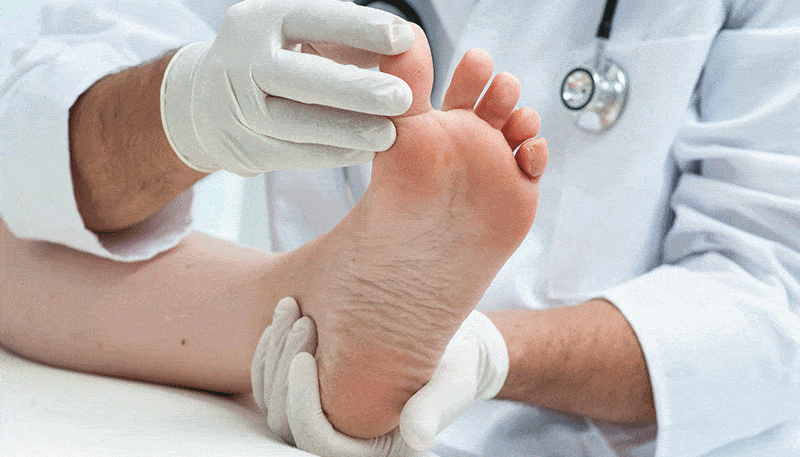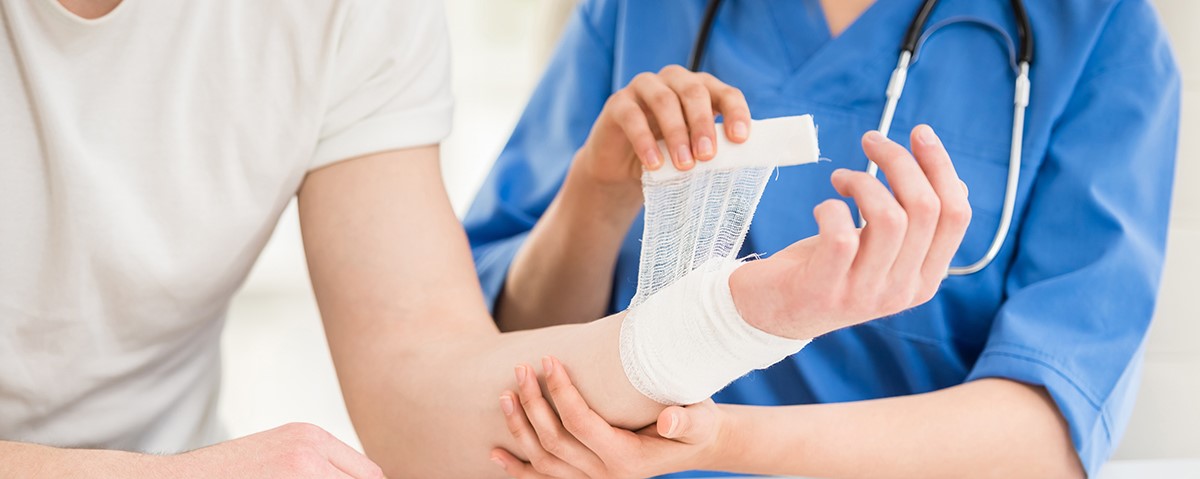Diabetic foot is a very common and major problem nowadays in India. Every diabetic patient should be educated well to prevent dreadful complications of the diabetic foot like callous, ulcers, and gangrene leading to amputation.
It is really difficult to manage and treat the most complex wounds effectively. The aging process and existing people with multiple medical conditions make it challenging for pathologies to improve and stay well-equipped to meet the needs of wound care.

Neuropathy assessment Dr. Ravul Jindal normally diagnose diabetic neuropathy by carrying out a physical examination and reviews your symptoms carefully along with checking your medical history. He will check the following:
- Muscle strength & muscle tone
- Sensitivity to vibration and touch
- Tendon reflexes
When you visit the best diabetic foot treatment clinic, your doctor will also observe your feet to check for cracked skin, sores, joint/bone issues, blisters etc.For all diabetes patients the we recommended that they should get their foot examined every year at least once without fail.Apart from the physical examination, Dr. Ravul Jindal may also carry out certain tests for diabetic neuropathy and the tests that can be conducted are:
- Filament test The doctor uses a brush made of soft nylon fiber (monofilament) over different skin areas to check your sensitivity to sensation of touch.
- Quantitative sensory testing
- Nerve conduction studies. This test helps know how fast your nerves in legs and arms manage electric signals. It is basically carried out to test for carpal tunnel syndrome.
- Electromyography (EMG). This test is basically carried out along with nerve conduction examination and EMG weighs the electrical discharges generated in muscles.
- Autonomic testing.
If in your case symptoms of autonomic neuropathy are observed, there are special tests that can be suggested to identify the changes in your blood pressure when you change your positions and also whether you are sweating normally.
Appointment
The Anodyne Therapy System (ATS) eliminates the painful symptoms and enhances sensation as well as balance in diabetic patients with DPN (diabetic peripheral neuropathy) to a greater extent. The Anodyne Therapy System offers a non-surgical and drug free method to improve blood circulation in nerves and cut down neuropathic pain.With the help of near-infrared light to release nitric oxide locally, a strong vasodilator through red blood cells, Anodyne Therapy enhances nerve function and assists the new blood cell and skin cell growth to facilitate wound healing.ATS treatments enhance sensation in your feet with DPN, reduce pain and enhance balance. Also, there are other factors excluding DPN that add to improved balance, falls that provide an opportunity for all risks reduction related to fall. Post 3/6 months of Anodyne treatment the patients experienced the following
- Pain Relief
- Enhanced Mobility &Balance
- Reduced risk of Fall
- Enhanced ability to carry out routine tasks.
- Improved Foot Sensation
Surgical foot debridement is a popular method performed in diabetic foot care. Well, minor debridement can be performed easily atbedside with or without local anaesthesia, but in case of extensive debridement it requires proper infrastructure with regional/ general anaesthesia performed in operating theatres. In case the surgery is delayed it can lead to risk like limb loss and mortality. Physicians treating diabetic patients suffering with foot ulcers decide whether the patients needs surgical procedure like bypass surgery, angiography for limb recovery or they should prevent such procedures during diabetic foot care management in patients who are prone to cardiac risk.
In case the patient shows up with a fresh diabetic foot ulcer, then he/she need proper care from surgeons, physicians, pedorthotists and podiatrists who possess expertise in dealing with complex issues.

Benefits
- Eliminates the affected tissues.
- Cuts down the risk of re-occurrence of infection.
Before the treatment process actually begins the wound is thoroughly checked to understand the depth of dead and injured tissues.Dr. Ravul Jindal would examine and analyze whether you need debridement and accordingly suggest the right procedure for you.
In spite of infrapoplitealbefore the knee angioplasty helping recover a number of limbs under risk of amputation, the treatment is restricted to some diabetic patients. When it comes to diabetic patients, they are 5 times more prone to develop CLI (critical limb ischemia) as compared to non-diabetic patients.
The major risk associated with PVD (peripheral vascular disease) is gangrene, which are responsible for around 50% of lower limb amputations in most diabetic patients.Infrapopliteal angioplasty can help improve limb recovery rates as compared to bypass surgery in patients with diabetes.
VAC therapy for treating diabetes foot ulcers plays a major role in foot care management.
Well, the treatment routine for diabetes wounds is completely different from surgery for musculoskeletal oncology or trauma surgery. In case of diabetes wound management, Dr. Ravul Jindal follows an intensive regime to provide best diabetic foot treatment in his clinic.
BENEFITS OF VAC Therapy According to the studies, VAC therapy is especially used to treat the following
- Diabetic wounds that show up revealing tendon, bone, fascia or joint capsule post debridement.
- VAC therapy can aid the generation of granulation tissue over the tendon, bone, fascia or capsule.
- Large wounds postdebridement.
- Ray amputation wounds
Foot ulceration is among the stressful issue in diabetic patients and can result in hospitalization and limb amputations.Even after having a lot of treatments available for treating foot ulcers in diabetic people, there are significantly less possibilities of all ulcers getting healed completely. Some added treatments like skin grafts&tissue replacement techniques are created to carry out wound closure.
In some cases, the products available for skin grafting treatment& tissue replacement certainly help toheal diabetic foot ulcers. They can also reduce further amputation to some extent.Foot ulcers are quite common but they are complex to treat and if they are not treated properly there are risk for amputation and mortality.
Preventive measures of diabetic foot
- Keep your blood sugar under control, quit smoking and follow these simple measures.
- Check your feet daily for any cut, redness and swelling. You can use hand mirror to see under your feet.
- Wash your feet daily with warm water and dry your feet especially in between the toes. Keep the skin smooth and soft by using a skin cream or lotion
- Trim your toe nails regularly and cut them straight across and smoothen them with nail file.
- Appropriate comfortable, well-fitting shoes (with weight distributing cradles) are essential and barefoot walking should be avoided Check inside your shoes so that it has an inner smooth lining. Regular check your shoes for cracks.
- Visit your doctor to take care of foot lesions.
- If you develop rough skin, corns, or calluses, ask your doctor to treat them, do not treat them yourself.
- Protect your feet from excess hot or cold conditions like radiators, hot pavement or hot water bags.
- Regular exercise like walking, dancing, and swimming is good for your feet. (Just avoid injuries)
- Check with your endocrinologist and vascular surgeon at least once a year. Foot examination should include assessment of structural abnormalities, neuropathy, vascular disease, ulceration and evidence of infection.
- In case of doubts, you must consult a specialist immediately.

